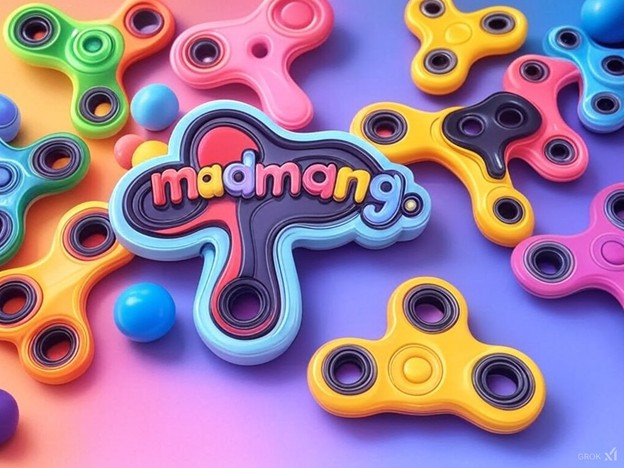
The Rise of Fidget Toys: More Than Just a Trend
Share
The Rise of Fidget Toys: More Than Just a Trend
In today's fast-paced world, where stress and anxiety seem to be constant companions, the quest for simple solutions to manage mental health has led to an unexpected phenomenon: the rise of fidget toys. With their tactile simplicity, these devices have captured the attention of both young and old, proving that sometimes, the simplest solutions are the most effective. At Madmang.com, we've noticed a fascinating trend: fidget toys in general are more searched for than any specific type like stress balls, highlighting a broad interest in this category rather than just one type within it. Let's dive into why fidget toys have become such a cultural staple and what this means for mental health and daily life.
The Appeal of Fidget Toys
Fidget toys come in various forms, from the iconic fidget spinner, which had its moment in the sun a few years back, to more novel entries like Pop Its, tangle toys, fidget cubes, and yes, stress balls. Their appeal lies in their ability to provide sensory feedback, which can be both calming and engaging. Here's a look at why they've become so popular:
- Stress Relief: In an era where mental health awareness is on the rise, people are seeking out tangible ways to manage stress. Fidget toys offer a physical outlet, allowing users to channel their nervous energy into something productive rather than letting it manifest in less healthy ways.
- Focus and Concentration: For many, particularly those with ADHD or similar conditions, fidget toys can improve focus by giving the hands something to do, thus freeing the mind to concentrate on other tasks. This has made them a common sight in classrooms, offices, and homes.
- Sensory Stimulation: These toys cater to our basic need for sensory input, which can be soothing or stimulating, depending on the individual's needs. This is especially beneficial for those on the autism spectrum or anyone who benefits from sensory processing aids.
- Cultural Phenomenon: Thanks to platforms like TikTok and Instagram, fidget toys have become part of internet culture, with trends like unboxing videos, challenges, and collectibles driving their popularity. The virality of certain designs, like the Pop It toy, shows how social media can catapult these items into mainstream consciousness.
The Market Response
The market has responded with an explosion of creativity and innovation. Manufacturers are not just producing more of the same; they're experimenting with materials, designs, and even integrating technology. Eco-friendly options using sustainable materials like bamboo or recycled plastics are gaining traction, reflecting a broader trend towards environmental consciousness.
Here at Madmang.com, we've seen a surge in interest across all types of fidget toys, with consumers looking for both novelty and functionality. This isn't just about following a trend; it's about finding tools that genuinely improve daily life.
Psychological Benefits
While the physical act of fidgeting might seem trivial, the psychological benefits are backed by some science. Engaging in repetitive motions can lower heart rate and cortisol levels, leading to a state of calm. Moreover, for those who fidget naturally, these toys provide a socially acceptable way to manage this behavior, turning what might be seen as a distraction into a constructive activity.
The Educational and Professional Landscape
Educational settings have had a mixed response to fidget toys. While some schools banned them due to potential distractions, others have integrated them into learning environments, recognizing their potential to aid concentration and reduce anxiety. In professional settings, they've become tools for mindfulness, helping employees manage stress without leaving their desks.
Looking Ahead
The future of fidget toys seems bright, with continuous innovation likely to keep them relevant. As mental health becomes more openly discussed, these toys might evolve even further to cater to specific therapeutic needs. Additionally, their integration into daily life suggests they're more than a passing fad; they're becoming part of our toolkit for well-being.
Conclusion
Fidget toys have transcended being mere novelties to becoming essential tools for mental health, focus, and sensory stimulation. Their broad appeal, as seen by the search trends favoring general "fidget" queries over specific types like stress balls, underscores a cultural shift towards accepting and using simple, tactile aids for managing the complexities of modern life. Whether you're at Madmang.com looking for the latest in fidget technology or just seeking a way to unwind, the world of fidget toys offers something for everyone.
So, next time you feel the need to squeeze, spin, or pop, remember, you're not alone in your quest for calm in the chaos. Fidget toys might just be the little helpers we all need to navigate our daily lives with a bit more ease and a lot less stress.
This post encapsulates the current fascination with fidget toys, providing insights into their appeal, benefits, and future.